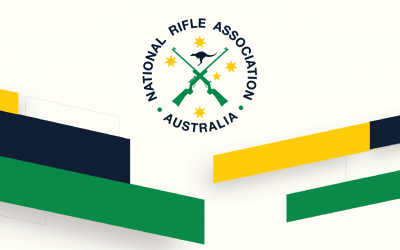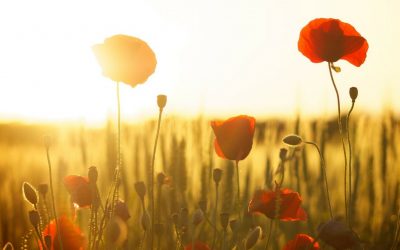INTRODUCTION
It has often been said that Australia came of age on a Turkish shore one morning some 14 years after Federation. That may be true and perhaps this is why we hold Anzac Day in such high regard in our national calendar. It certainly is not to celebrate a great military victory, because the landing and subsequent battle at Gallipoli was definitely not that.
So, on 25 April we commemorate the anniversary of the day Australian and New Zealand soldiers landed on the beaches of Gallipoli in 1915 as part of the Allies’ invasion. On that day we recognise more than 1.5 million men and women who have served Australia in conflicts, wars and peacekeeping operations around the world. It is especially a time to remember some 102,000 Australians who lost their lives while serving.
Anzac Day is one of our most significant and sacred national days. It is the day our nation remembers it owes an enormous debt of gratitude to all those who have served our nation, and those who have given their lives in defence of Australia, our freedoms and our values.
What is not widely known is the role played, after war was declared, by many members of the rifle clubs across Australia at the time. Australian rifle shooters willingly and in large numbers answered the ‘call to arms’ eagerly volunteering to do their duty and in so doing were actively involved in ‘defining our great nation’.
In the early 1900s many Australian country towns had rifle clubs and these clubs were an integral part of the social fabric of these small communities. The consequences of the Great War were enormous and many of our small towns were afflicted with the persistent pain of losing much loved members of their communities.
As we look towards the Anzac Day commemoration in 2022, I ask all National Rifle Association of Australia clubs and members to remember and reflect on the commitments made by our club members during the Great War and the conflicts that followed, some of which resulted in the ultimate sacrifice.
We recall shooters of reputation who died during the Great War, such as David McAlister who at 27 years of age won the 1913 NSWRA Kings Prize and who on 26th September 1917 was killed in action in Europe. And also the 24 year old Hutton Perkins Armstrong, a 1913 Bisley Team representative, who was killed at Quinn’s Post on 10th May 1915. There were many more not so well known rifle shooters who lost their lives so that we can enjoy the freedoms and lifestyles we have today.
I ask that while we remember, we think too of the families impacted so severely by war. Two rifle shooting families who gave much during the Great War and mostly suffered in silence in the long years that followed were the Allen family from Gin Gin and the Keid family from Pimpama and later Brisbane in Queensland.
ALLEN FAMILY

Front from left to right: Willie, William snr., Mrs. Allen and Lily.
Photograph taken in 1912 is held by John Oxley Library, State Library of Queensland
Josiah, James and Ernest Allen, three sons of William and Sarah Jane Allen of Gin Gin, Bundaberg Queensland, all enlisted on the same day in July 1916. All three were members of the Gin Gin Rifle Club and joined the 49th Queensland Battalion. Ernest Allen was known to be an expert horseman and rifle shot, being champion for Wide Bay during 1914. The three brothers left Australia on the same ship in October 1916, and arrived in England the next month. They were sent to France on 8th January 1917 and all three joined the 49th Battalion in the field. Josiah, the youngest brother, and James were both killed during the Battle of Messines in Belgium on 7th June 1917.
The surviving brother, Ernest, tried to locate the whereabouts of the map reference of his brothers’ graves but had no success. He was sent to hospital in August 1917 with trench fever and rejoined the 49th Battalion in February 1918, aware that both his brothers were dead. Having difficulty in contacting him, another brother wrote to the Australian Imperial Force (AIF) in late November 1917, “Private Ernest Allen has received neither mails nor parcels, although we write regularly weekly, and have sent several parcels. Private Ernest Allen has been under the doctor, off duty, for about 2 months, and is now convalescing. The fact that he can get no news from home, in connection with the fact of his brothers’ tragic fate, plays on Pte. Allen’s mind and greatly grieves him…”
Private Ernest Allen was killed in action on 25th April 1918, the third anniversary of the first Anzac Day. His body was also never recovered, and his name is remembered on the Australian National Memorial Villers Bretonneux in France.
Tragically, as a result of the Great War, the Allen Family of 11 members was reduced to eight having lost three sons and brothers.
KEID FAMILY

Back Row – L to R: Harry, Leonard, Walter, Charles, Ethel, Mary and Bill. Font Row – L to R: Ted and Guy.
The Keid family is a story of six Australian brothers who, together with so many of their countrymen, crossed the world to fight in Europe’s war.
The brothers and their fellow Australians had no quarrel with Germany, Austria or Turkey. Men volunteered for a mixture of different reasons according to statements made at the time. The last of the six brothers (Harry) died in 1969 and none left a diary. Their motivations and story, like so many others, must therefore rely on skimpy official records. In 1914 the economy was poor and on the brink of depression but the brothers were all in employment. Leonard, Walter, Bill and Guy were working in the Brisbane area, and Harry and Ted in North Queensland when war was declared. Leonard was married with three children.
Harry Keid was a crack shot and was reputed to be the only man ever to shoot a possible on the Cloncurry Rifle Range when he and Ted were working in the area around 1910. While it is very likely that Harry was a member of the Cloncurry Rifle Club and later the Evelyn Rifle Club, it is surmised that Ted, given he and Harry were working together throughout North Queensland, was also a member of the same clubs.
Harry, the eldest, was 31 when he enlisted and Guy, the youngest, 19. They were ordinary Australian young men. But then, the millions of soldiers who gave their lives in the War to end all wars, were all mainly ordinary young men.
Four Keid brothers fought at Gallipoli and five served on the Western Front. Harry, Bill, Ted (all with 9th Battalion) and Guy (with 3rd Field Ambulance) fought at Galliopli. Harry was severely wounded as he waded to the beach in the initial landing and Bill was killed on 23rd June 1915. Harry, Ted and Guy survived the Gallipoli campaign and were later joined by Leonard and Walter in Europe. At this time, Harry Keid was chosen to be an escort to General Birdwood and was spared some of the constant fighting in the front line.
Leonard Keid was killed at Pozières on 4th September 1916 and a day later Walter Keid was killed, also at Pozières. Guy was profoundly affected by the death of his brothers and was sent to England, and was then returned to Australia, arriving on 8th March 1917. Sergeant Ted Keid took part in the Third Battle of Ypres where, on 1st November 1917, he was wounded by artillery fire and died at the Casualty Clearing Station the next day.
With brothers Leonard, Walter and Ted all killed in action and Guy returned to Australia, only Harry, the last of the six brothers, was still alive and with the AIF fighting in Europe. Mr T.J. Ryan, the Premier of Queensland, believed the Keid family had done enough and was instrumental in having Harry Keid returned to Australia. Harry was in the War Hospital at Bath (UK) when he received his orders to return to Australia and upon arriving home was discharged on 23rd March 1918. Harry did not rejoin a rifle club after the war.
The grief and suffering of the Keid family resulting from the Great War is unimaginable and difficult to comprehend today. Leonard’s wife Eliza suffered the most with severe depression. Tragically, as a result of the Great War, the Keid Family of nine members was reduced to five having lost four sons and brothers.
Sadly, war would strike the Keid family again. Leonard and Eliza Keid’s son, Les, enlisted during World War 2 and was captured by the Japanese while fighting in Rabaul. As a prisoner of war (PoW), Les was one of 845 who were embarked on a ship headed for Japan. This PoW ship was sunk by a US submarine on 1st July 1942 leaving only three survivors, all being crew members. Eliza Keid would not learn of her son’s fate until October 1945.
CONCLUSION
Many families lost loved ones to the horrors of the Great War but not all suffered as badly as the Allen and Keid families of Queensland. All three sons who enlisted from one family were killed with two dying on the same day. The other family had six sons enlist resulting in four being killed in action, one returned severely depressed and the sixth son brought home when the Government realised what the family had endured.
We must never forget the sacrifices made by Australians during the Great War and all other conflicts that followed. Equally, we must never take for granted the losses suffered by the families that lived on without their loved ones after the various conflicts ended.
Additionally, we acknowledge all members of the Australian Defence Force who are currently serving and carrying on the legacy by standing on the shoulders of fallen heroes to defend Australia and protect our freedoms and our values.
ANZAC Day is set aside for us to remember those, including our rifle club members, who have served our country in all conflicts, to reflect upon their unselfish service and to embrace the history that has defined our country.
LEST WE FORGET
Information contained within this document has been gathered from:
a. https://vwma.org.au/explore/people/162296 (Ernest Allen)
b. National Archives of Australia – World War 1 Soldier Records
c. The Brothers Keid by Cedric Hampson (2005)
Author: Bruce A R Scott, President, National Rifle Association of Australia, 5 April 2022



